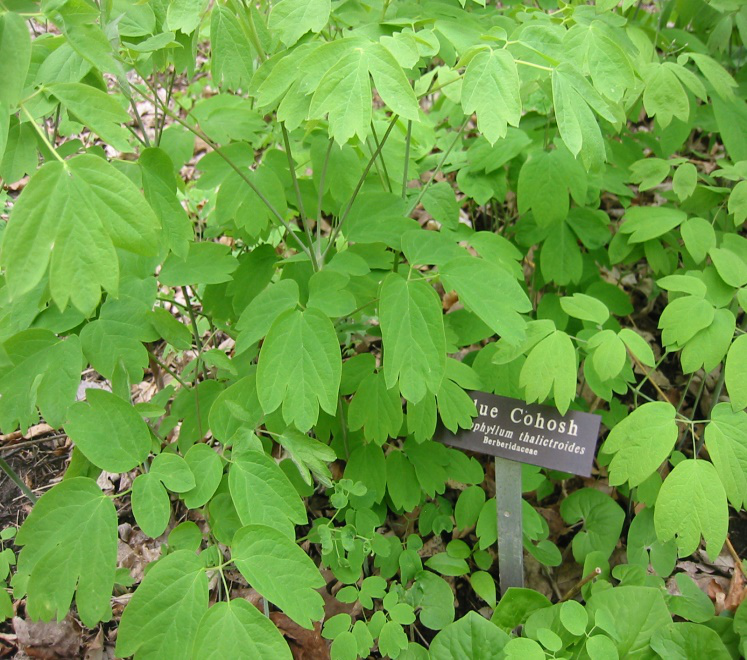Description
Botanical: Caulophyllum thalictroides
Other common names: Squaw Root, Papoose Root, Blue Ginseng, Yellow Ginseng, Beech Drops, Blueberry Root
Country of Origin: United States
Blue Cohosh is an important "women's herb" that was introduced to early American settlers by Native Americans to ease childbirth, menstrual problems and pelvic inflammation. It is an herbal medicine used for missing menstrual periods, painful periods and, historically, for false or early labor (birth) pains. Modern herbalists still use it to treat women's health problems, as well as bronchitis and rheumatism.
Beneficial Uses:
Blue Cohosh has been used primarily for hundreds of years to help women, particularly in the area of childbirth. The herb has been used to stimulate uterine contractions and induces and promotes the onset of labor when delivery is due or in cases of delayed labor. As a uterine stimulant, it also helps in cases of prolonged labor by relaxing the uterus and increasing cervical dilation for easier delivery, less pain and exhaustion and, thus, has earned the nickname, "A Woman's Best Friend." In contrast, Blue Cohosh will also stop false labor pains.
As an effective diuretic, Blue Cohosh induces and increases the flow of urine and will help eliminate excess water in the system. The herb also promotes heavy perspiration, which will help eliminate toxins through the skin.
As a mild expectorant, Blue Cohosh is still used today by herbalists to reduce congestion in the lungs and help treat bronchitis.
Blue Cohosh is a tonic that has been known to calm and improve nervous disorders (it has been used to treat hysteria). It is also said to be useful for memory problems. As an herbal antispasmodic, the herb affects the whole system, thereby having an additional effect on the nervous system. Blue Cohosh has been used to relieve muscle cramps, spasms and some epileptic seizures, hiccough (hiccup) and whooping cough.
In further promoting women's good health, Blue Cohosh is believed to have beneficial effects on uterine ailments, including leukorrhea (vaginal discharge) and vaginitis (inflammation of the vagina). The herb is also thought to help pelvic inflammatory disease, endometriosis, erratic menstruation and retained placenta. In addition, the herb is also believed to relieve ovarian neuralgia.
Blue Cohosh is an anti-inflammatory that helps to reduce the inflammation of rheumatism, arthritis and gout.
Blue Cohosh is considered an emmenogogue, an agent that is used to encourage menstruation and regulate its flow.
An old use for Blue Cohosh was as an effective anthelmintic, a medicine that destroys or expels worms that inhabit the intestinal canal. An alkaloid in Blue Cohosh, methylcytisine, appears to stimulate intestinal activity and may, thus, be responsible for this purging action.
Contraindications:
Blue Cohosh should be used with caution; it can be quite irritating to the mucous membranes and should be used only under the supervision of a physician. Nursing mothers and children should not take Blue Cohosh. Pregnant women should not use this herb, as it can stimulate uterine contractions.
Blue Cohosh should not be taken for an indefinite period of time (a week at a time is recommended) and should be avoided by patients with hypertension and heart disease or are taking heart disease medications, such as Lanoxin, digoxin, Cardizem, Dilacor, diltiazem, Calan, Isoptin and verapamil.


